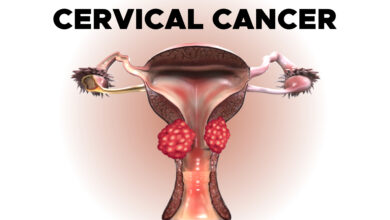
Cervical Cancer: Treatment Options By Stage
Treatment Options, remissions, recurrence and clinical trials.
Treatment Options By Stage
Radiation therapy alone or surgery is generally used for an early-stage tumor. These treatments are equally effective at treating early-stage cervical cancer.
Chemoradiation (a combination of chemotherapy and radiation therapy) is generally used for women with a larger tumor, an advanced-stage tumor found only in the pelvis, or if the lymph nodes have cancer cells.
Commonly, radiation therapy and chemotherapy are used after surgery if there is a high risk for the cancer coming back or if the cancer has spread.
Metastatic Cervical Cancer
If cancer spreads to another part of the body from where it started, doctors call it metastatic cancer. If this happens, it is a good idea to talk with doctors who have experience in treating it.
Doctors can have different opinions about the best standard treatment plan. Clinical trials might also be an option. Learn more about getting a second opinion before starting treatment, so you are comfortable with your chosen treatment plan.
Chemotherapy, immunotherapy, and surgery may be used to treat or remove newly affected areas in both the pelvic area and other parts of the body. Palliative care will also be important to help relieve symptoms and side effects, especially to relieve pain and other side effects from radiation therapy.
For most people, a diagnosis of metastatic cancer is very stressful and difficult. You and your family are encouraged to talk about how you feel with doctors, nurses, social workers, or other members of the health care team. It may also be helpful to talk with other patients, including through a support group.
Remission and the Chance of Recurrence
A remission is when cancer cannot be detected in the body and there are no symptoms. This may also be called having “no evidence of disease” or NED.
A remission may be temporary or permanent. This uncertainty causes many people to worry that the cancer will come back. While many remissions are permanent, it is important to talk with your doctor about the possibility of the cancer returning.
An important part of follow-up care is watching for recurrence. Understanding your risk of recurrence and the treatment options may help you feel more prepared if the cancer does return.
If the cancer returns after the original treatment, it is called recurrent cancer. Recurrent cancer may come back in the same place (called a local recurrence), nearby (regional recurrence), or in another place (distant recurrence).
When this occurs, a new cycle of testing will begin again to learn as much as possible about the recurrence. After this testing is done, you and your doctor will talk about the treatment options.
Often the treatment plan will include the treatments described above, such as surgery, systemic therapy, and radiation therapy, but they may be used in a different combination or given at a different pace.
Your doctor may suggest clinical trials that are studying new ways to treat this type of recurrent cancer. Whichever treatment plan you choose, palliative care will be important for relieving symptoms and side effects.
People with recurrent cancer often experience emotions such as disbelief or fear. You are encouraged to talk with the health care team about these feelings and ask about support services to help you cope.
If Treatment Does Not Work
Recovery from cancer is not always possible. If the cancer cannot be cured or controlled, the disease may be called incurable, distant metastatic, or terminal.
This diagnosis is stressful, and for many people, advanced cancer is difficult to discuss. However, it is important to have open and honest conversations with your health care team to express your feelings, preferences, and concerns.
The health care team has special skills, experience, and knowledge to support patients and their families and is there to help. Making sure a person is physically comfortable, free from pain, and emotionally supported is extremely important.
People who have advanced cancer and who are expected to live less than 6 months may want to consider hospice care. Hospice care is designed to provide the best possible quality of life for people who are near the end of life.
You and your family are encouraged to talk with the health care team about hospice care options, which include hospice care at home, a special hospice center, or other health care locations.
Nursing care and special equipment can make staying at home a workable option for many families. After the death of a loved one, many people need support to help them cope with the loss. Learn more about grief and loss.
